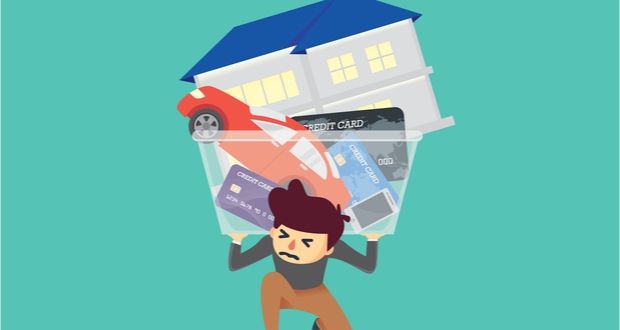Many people experience personal debts of different natures at various stages within their life. – not all of them necessarily negative. However, it can add a strain on mental health if you feel as though debts are piling up on you and you find it difficult to clear them.
In this article, we’ll look into the different kinds of debts that people experience and how to manage personal debt.
UK debt statistics
According to The Money Charity, the UK’s total personal debt figure stood at a sizable £1.8 trillion by the end of June 2022 – a figure that has risen by an average of over £1,100 per person across the entire country in just 12 months. Amid the ongoing cost of living crisis that has financially impacted households it’s troubling to read that the average debt per adult is £34,140. This is higher than the average annual earnings across the country.
Net mortgage lending and consumer credit lending have both increased in recent months – perhaps influenced by differing factors as a result of the COVID-19 pandemic.
What kind of debts do people have?
Personal debts take many forms, so understanding what is classed as a debt can help to understand ways in which to best manage them.
- Unsecured debts: If you take out a personal loan or credit card that does not require you to sign something off as collateral (an asset that a lender accepts as security for a loan), this is an unsecured debt. Your credit file will be used by companies to assess your suitability. Failing to meet your scheduled payments could lead to legal proceedings being taken against you.
- Secured debts: If you pay for a car on finance, this is a prime example of a secured debt. If you cannot meet the payments for your car, it will be taken back by the company you got it from. Some loans are also secured against items such as property, including mortgages.
- Mortgages: A common form of debt for many people is their mortgage. Essentially a secured loan you take out from a bank or building society to own your home, mortgages are not generally seen as ‘negative’ debts as you can build equity in your home as you make monthly payments.
What are the ways to deal with debt?
If you have mounting debts and need help with making your payments, here are some ways in which you can make things easier.
Prioritise your debts
Make a list of all your current debts and identify which debts should be viewed as priority debts. These are the type of debts were lack of payment can lead to severe consequences or action against you. These include the loss of your home, belongings needed to maintain your quality or life, and substantial fines or penalties against you.
Set a personal budget
A personal budget helps you form a clear picture of your financial situation. Start by gathering information on your incomings, outgoings, bills, scheduled payments, and debts. Once you've covered all your bases, sort your expenses into different categories to allow you to understand your spending habits and adjust them accordingly. By setting daily, weekly and monthly budgets, you can control your spending and identify your areas for improvement.
Direct debit
Rather than moving money around each month, set direct debits to handle your debts as you are paid your salary each month.
Consolidation
If you are paying off multiple debts, you may be able to take out a bad credit loan to consolidate these payments into one monthly outgoing. You might also be able to save on interest this way. Just be sure you can make the repayments to avoid making your situation worse.
Balance transfers
A balance transfer credit card works similarly, giving you a sum to pay off multiple debts and leaving you with one repayment to think about. If you can meet higher monthly payments, you may be able to take advantage of interest-free offer windows.
Taking the time to look into where your debts are and what you can do make a dent in them can help you to split them into manageable chunks.






